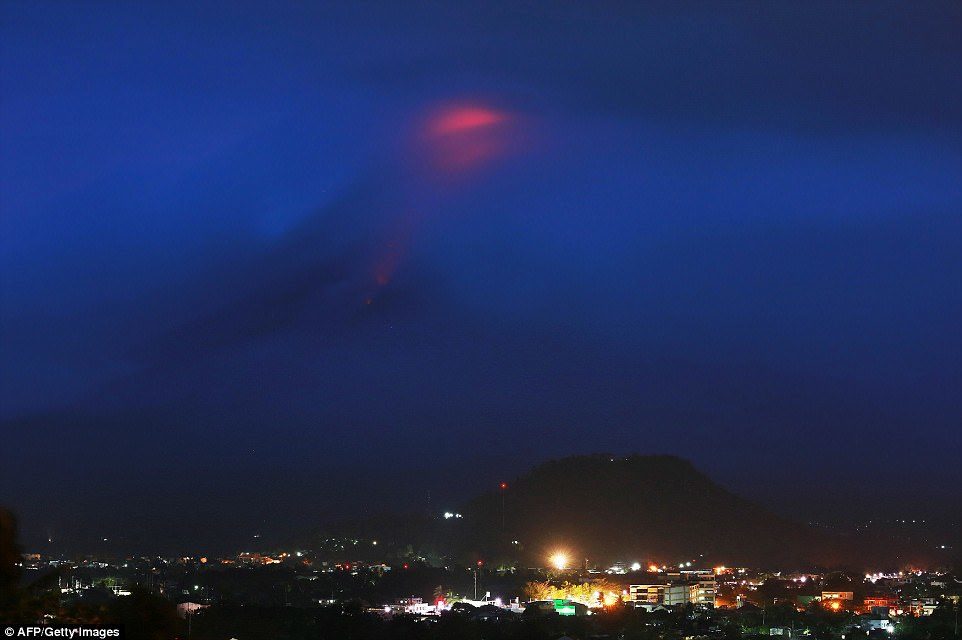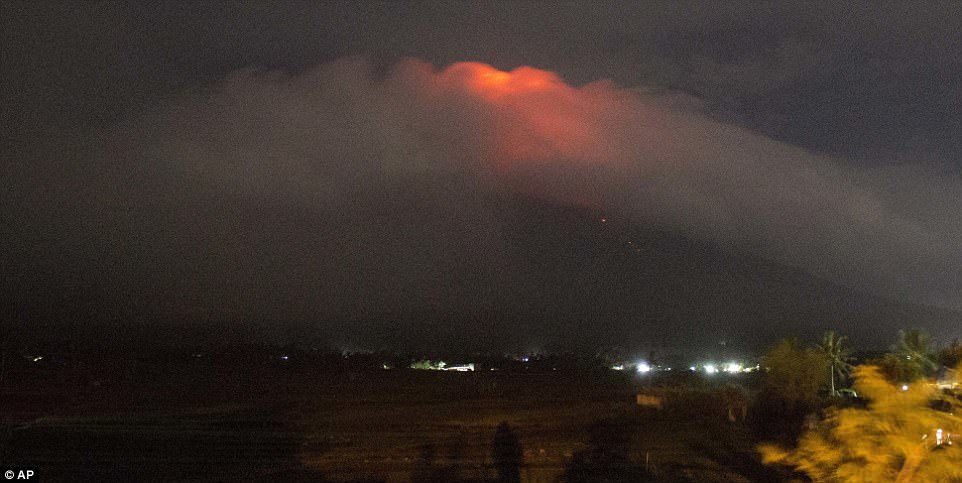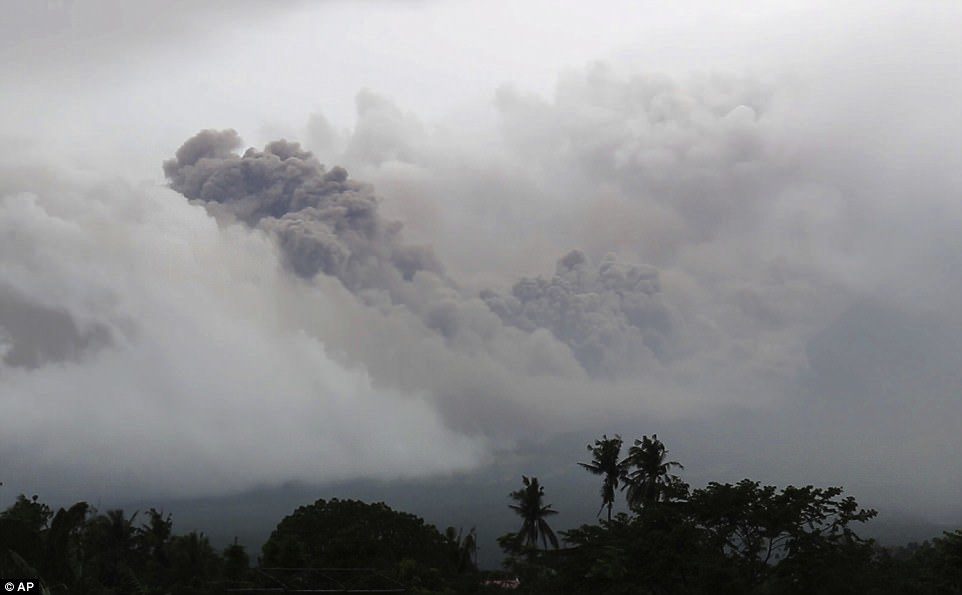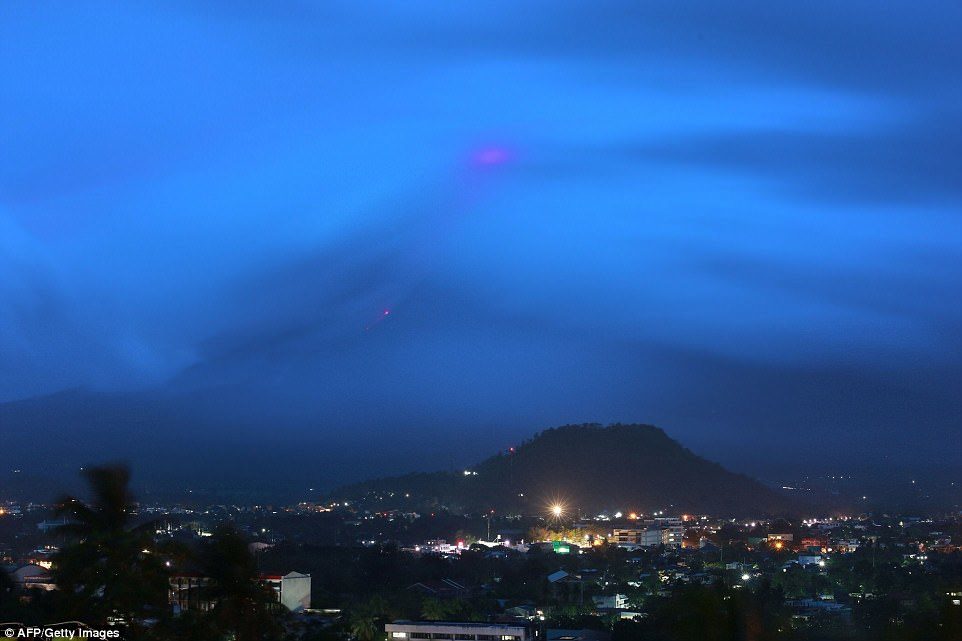
Lava is slowly flowing out of the Mayon volcano's crater along with a spectacular 1,000 metre (3,280 foot) ash plume rising into the sky, the nation's volcanology institute said.
More than 12,000 people have been ordered to evacuated from a seven kilometre (four mile) danger zone around the crater, as officials warned them of potentially destructive mudflows and toxic clouds.
It is considered the nation's most active volcano
'Technically, the volcano is erupting but the eruption is fairly quiet. It may escalate into a hazardous eruption,' Paul Alanis, science research specialist at the Philippine Institute of Volcanology and Seismology said.
A hazardous or explosive eruption means a lava fountain or a spray of hot rocks and gases that could move as fast as 60 kilometres per hour, he added.
Local disaster officials also warned of volcanic mudflows known as lahars.
'Because of continuous rains in past weeks, debris deposited [on] the slopes of Mayon could lead to lahar flows. If rain does not stop it could be hazardous,' Claudio Yucot, head of the region's office of civil defence, he said.
'Because of continuous rains in past weeks, debris deposited (on] the slopes of Mayon could lead to lahar flows. If rain does not stop it could be hazardous,' Claudio Yucot, head of the region's office of civil defence, he said.
Steam-driven eruptions and rockfalls began over the weekend, and the crater began glowing on Sunday evening, in what Phivolcs said was a sign of the growth of a new lava dome
Lava last flowed out of Mayon in 2014 when 63,000 people fled from their homes.
'We think the lava now is more fluid than in 2014. This means the flow can reach further down (the slopes) at a faster rate,' Phivolcs head Renato Solidum said.
'We see similarity with eruptions where the first phase of the activity started with lava flow and culminated in an explosive or hazardous part. That's what we are trying to monitor and help people avoid.'
The Philippines is part of a 'Ring of Fire' of islands in the Pacific that were formed by volcanic activity, and has to contend with 22 active volcanoes.
Mayon has a long history of deadly eruptions.


In 1814 more than 1,200 people were killed when lava flows buried the town of Cagsawa.
An explosion in August 2006 did not directly kill anyone, but four months later a typhoon unleashed an avalanche of volcanic mud from Mayon's slopes that claimed 1,000 lives.
In Monday's lava flow, Phivolcs advised residents to use a damp cloth over their mouths and stay indoors to avoid inhaling sulphur dioxide gas.
'If you breathe, you will feel like coughing and clearing your throat. It also stings and is painful in the eyes,' Bert Recamunda, a 55-year-old engineer and Mayon watcher, told AFP after visiting Camalig town near the volcano.
Classes were suspended in parts of Albay province where Mayon is at, and some schools were used as evacuation centres.
'I am afraid. The volcano rumbles like a rolling thunder,' Nerry Briones, 40, told AFP from a classroom in Camalig town, where she and her three children have stayed for the past two nights along with other evacuees.




Reader Comments
to our Newsletter